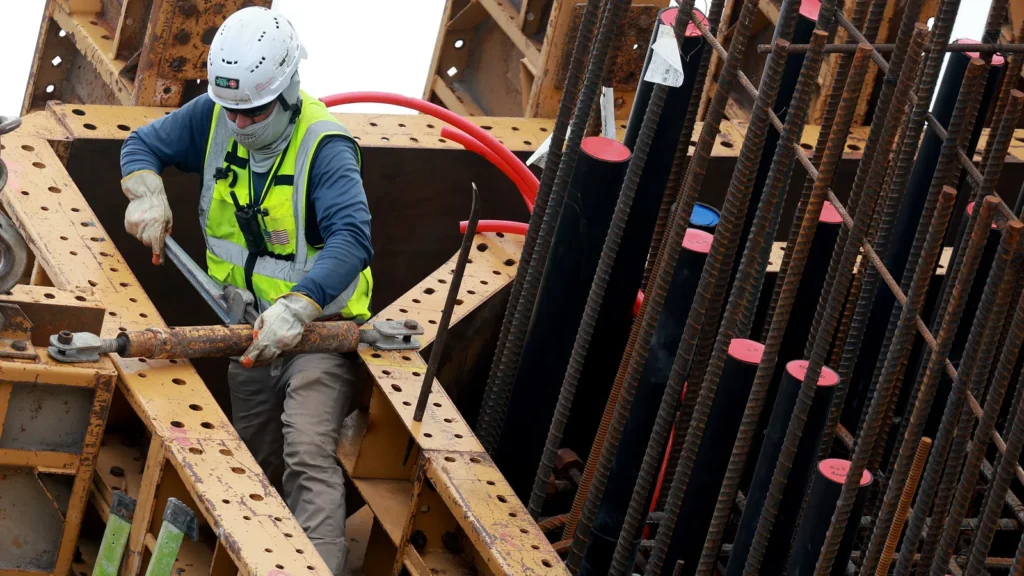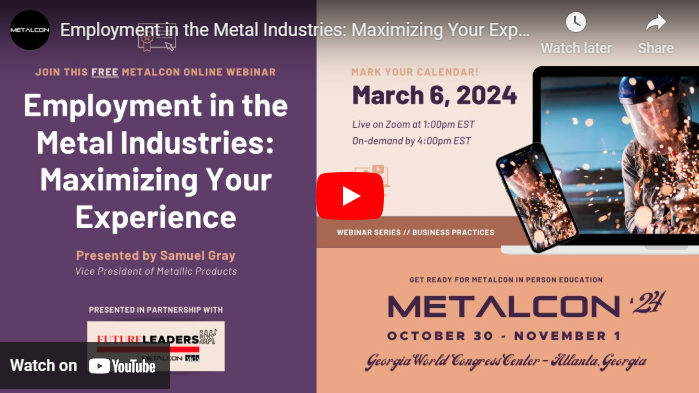
The modern job market has changed drastically over the last 4 years. What employers are looking for, and what employees are looking for has shifted greatly. For people new to the metal industries, or those looking for employment for the first time in the past several years, this industry and many others in general can be confusing.
According to most research, the metal construction industry is expected to grow at a healthy rate in 2024. However, the industry is still facing the shortage of skilled workers as one of its biggest challenges. Take, for example, the metal fabrication and sheet metal fabrication industry, which is currently facing a shortage of welders and CNC machinists. To keep up with the expected growth, the industry needs to invest in training and education programs to attract and retain skilled technicians.
Understanding Labor Shortages
Continually capturing the trends on job openings, labor force participation, quit rates, and more, the U.S. Chamber of Commerce’s latest data shows that the U.S. currently has 9.5 million job openings, but only 6.5 million unemployed workers. Companies of every size and industry, across nearly every state, are facing unprecedented challenges trying to find enough workers to fill open jobs.
According to their data, the labor force participation rate is 62.5%, down from 63.3% in February 2020 and 67.2% in January 2001. Several factors have come together to cause the ongoing shortage, including but not limited to:
- Early retirements and an aging workforce – the number of adults 55 and older being detached from the labor force due to retirement grew from 48.1% in Q3 of 2019 to 50.3% in Q3 2021
- Net International Migration to the U.S. is at its lowest levels in decades – the impact that immigration has had on U.S. population growth dropped by 76% compared to the decade prior
- Lack of access to childcare – as late as September 2021, childcare industry employment remained 10 percent lower than pre-pandemic levels
- New business starts – the past few years have seen a trend of record-high numbers of new businesses/entrepreneurship and a surge in digital commerce
- An increase in savings – Higher income and savings bolstered people’s economic stability, however, high inflation is starting to drive down savings accounts, necessitating the need for many to return to the workforce
The Construction Employment Landscape
Contractors are staying busy with infrastructure work as federal money continues to roll out. However, worker shortages and high inflation continue to strain the sector, and spending on transit and fossil fuel projects slumped in the past year.
According to the U.S. Census Bureau, total construction spending was up 14% from December 2022 to December 2023 in (non inflation-adjusted) dollars, with nonresidential spending rising 20%, driven by manufacturing work as well as infrastructure segments like roads and waste.
In AGC’s 2024 Outlook, 69% of respondents expect to increase their headcount and hiring over the next 12 months, though 55% believe it will be harder to hire. Contractors are still struggling to staff their jobs, impacting work.
Ken Simonson, chief economist of Associated General Contractors of America shares, “Labor costs certainly are rising and projects may take longer if you only have 40 electricians and need 100. Some projects have been put on pause or scaled back or are taking longer than had been expected because of a shortage of critical labor.”
Why Construction Is Bucking the Trend
The construction hiring boom points to one way in which the economy so far has very different trends than in past decades. Demographic shifts, big federal investment in manufacturing, and a shortage of housing supply have kept the sector in forward motion, helping stabilize overall economic activity. According to the Labor Department, hiring was among the strongest in the construction sector in December 2023, adding 17,000 jobs.
According to Axios, “The demand for new workers is a result of several shifts, some long in the making (muted immigration, retiring workers and housing shortages) and some unique to this economic cycle, including generous federal funding that’s supported infrastructure and manufacturing investment.” Historically, at times of high interest rates, construction labor lags but the trend has been different this time due to the impact of large structural changes including the current administration’s programs to invest in clean energy, semiconductor manufacturing, and more.
With more than half of contractors expecting to increase their staffing levels over the next six months, according to ABC’s Construction Confidence Index, the supply of workers is unlikely to meet demand for the first half of 2024 (Source: Metal Construction News).
Employment in the Metal Industries – FREE On-Demand Webinar
Join us on-demand for “Employment in the Metal Industries: Maximizing Your Experience,” to help you understand just what employers are looking for. Samuel Gray, Vice President of Metallic Products, shares what he looks for in employees and what his company considers in the hiring process. Sam will also share strategies your company can use to turn a candidate into a “great” employee. Whether you are looking for a new role in the industry, are looking to grow in this industry, or are looking for good employees yourself, this session will be beneficial for everyone.

